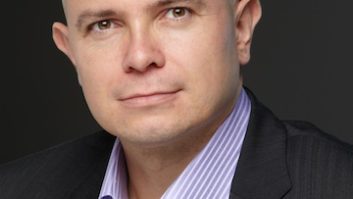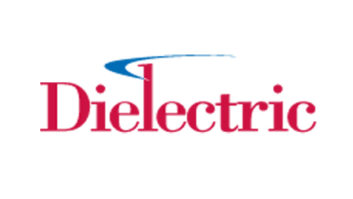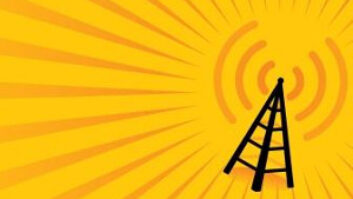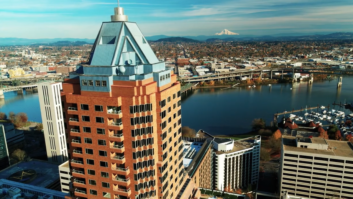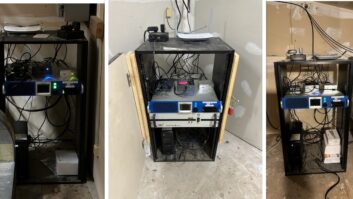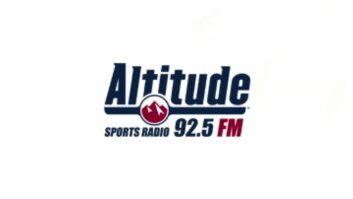OSLO, Norway — Digital switchover becomes a reality in Norway this January as the country starts to switch off national FM signals in favor of DAB.

Engineers face freezing conditions at Hadsel, north of the Arctic Circle.
Credit: Norkring
The switchover affects 23 national stations, and some local stations in metropolitan areas. It starts at 11:11 a.m. on Jan. 11, 2017 in the Nordland area, rolling out through the country in six switch-off regions, and will be complete by the end of the year.
Norway’s airwaves have a mix of national and local FM broadcasters. In the transition to DAB that starts this month, some national and urban local signals will convert to DAB and turn off their FM transmission, with only local stations in less populous areas remaining on FM. Norway is the first country to make this transition.
SCHEDULE

Engineers work at the top of a transmission mast in southern Norway.
Credit: Norkring
In two of the six areas, NRK, the P4 Group and SBS Radio will all switch off their FM networks simultaneously. Public service broadcaster NRK will switch off several weeks before the private ones in the other four regions, including the capital Oslo, which starts switchover in September.
The Norwegian state broadcaster NRK started its first DAB station — NRK Klassisk, a classical music service — in 1995. Since then, it has launched 10 others, with those after 2010 broadcasting in DAB+.
One of the new services is NRK P1+, for “senior listeners.” Øyvind Vasaasen, head of distribution and responsible for the switchover, says the station has been a major success: “It is actually a bit of a radio love story. The feedback from listeners has been unanimously positive and heartfelt. It is by far the biggest digital channel in Norway and it had 200,000 listeners on its first day in 2013. Digital listening in the age group 60+ is 67 percent — I think we can credit the station for that.”

Measuring DAB signals on the road, Tore Øvensen (left) is pictured with Olav Fostås of MTG and Petter Hox of NRK. Teams from the broadcasters have driven 40,000 kilometers around Norway to test the DAB reception — equal to a trip round the world.
Credit: Digital Radio Norway
Adoption of digital radio in Norway has been high, with seven out of 10 Norwegian households owning at least one digital radio, and 2.1 million Norwegians listening each week to digital stations.
However, challenges remain, as 60 percent of people in Norway say that they will only upgrade their car to digital radio once the switchover starts, with just 30 percent of people have already converted to DAB in the car.
The focus on listener experience is highlighted by the CEO of Digital Radio Norway Ole Jørgen Torvmark, who says: “Most people use DAB without any problems, however, as a large number of listeners are doing a simultaneous switchover, the need for consumer help cannot be underestimated. We find that people need to be reminded of the importance of correct antenna installation, and re-scanning of radio sets.”

NRK’s engineer Michel Gascoin measuring DAB signals on a boat in northern Norway.
Credit: NRK
Torvmark explains that Norway’s unique nature has presented some unusual challenges for them: “NRK’s DAB network is built to give good coverage at sea — ships can receive DAB signals at least 50 kilometers from shore. Only DAB offers the Norwegian fishing fleet an around-the-clock weather station,” he said.
“Transport authorities are installing DAB in all of the road tunnels that currently have FM, to ensure that all stations receivable outside the tunnels are also available inside, with safety announcements heard on all channels. And NRK is about to deploy more than 130 smaller new transmitters to make the coverage even better, mainly for the rural areas in the northern part of the country.”
CHALLENGES


Different campaign ads feature humorous characters, or highlight the pleasures of radio listening.
Credit: NRK
Meanwhile, NRK’s regionalized content brings its own challenges. “NRK is the only broadcaster employing dynamic multiplexing to our DAB transmissions,” said Vasaasen.
Regional services are on for about six hours per day on our main channel NRK P1 — three hours in the morning and three hours in the afternoon. During these hours NRK P1 is split into several unique channels within each region, as each region consists of at least two different districts. The dynamic multiplexing — the ‘splitting and merging’ — allows us to maximize quality in terms of bitrates.”
And Vasaasen confirms the importance of explaining this to listeners: “We need to make it common knowledge that NRK airs on different frequencies around the country. We’re launching a huge information campaign on all our platforms that aims to inform the public about this, and we also recently started a chat service that will only answer DAB-related questions.”
Meanwhile, the majority of Norway’s local stations will continue transmitting on FM after the digital switchover. The scattered population makes radio distribution expensive for local services that may be the only station broadcasting to a particular area. The government is therefore allowing analog transmission to continue in rural areas for a further five years, and at the same time has set up subsidies for those who want to build local DAB networks. However, in the largest cities, local commercial stations already broadcast on DAB, and will be switching off FM signals.

For countries considering switchover in the future, Torvmark offers this advice: “A clear digital radio action plan is crucial for making the switchover succeed. And you’ll need a committed and united radio industry, and a government with courage and a desire to secure the future of radio.”
Will Jackson reports on the industry for Radio World from London.





